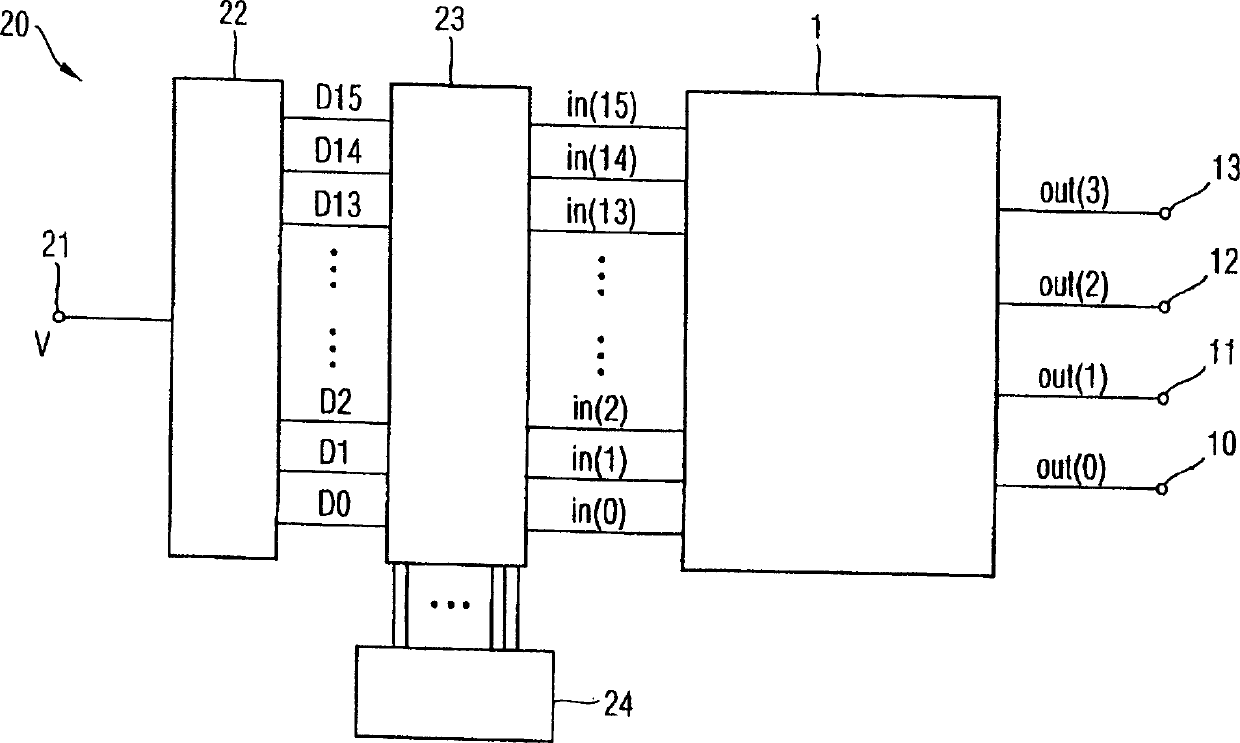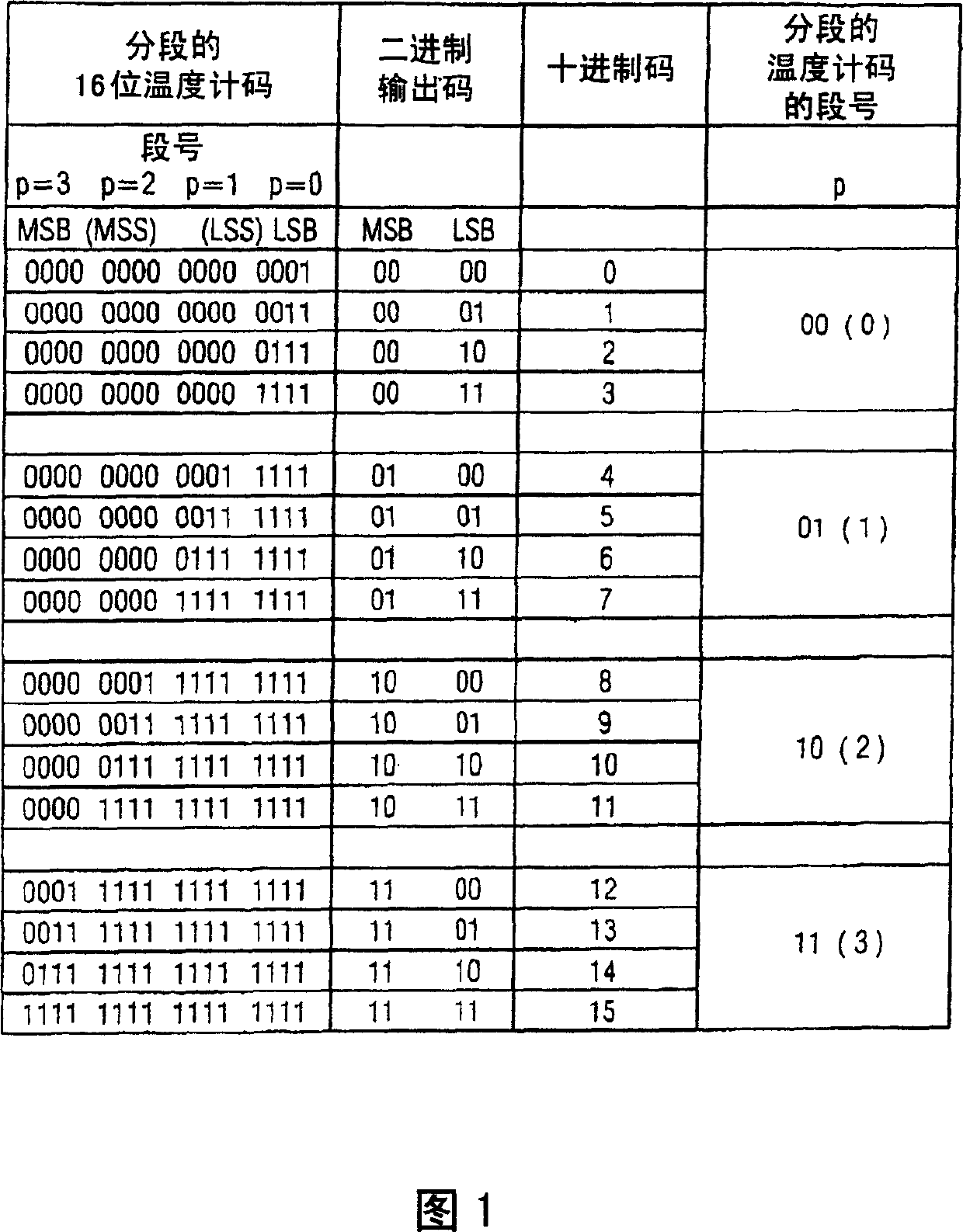Converter for converting thermometer code and its method
A conversion device, thermometer code technology, applied in the direction of code conversion, electrical components, etc., can solve problems such as unfavorable conversion circuit performance, and achieve the effect of reducing computational complexity and circuit expenditure
- Summary
- Abstract
- Description
- Claims
- Application Information
AI Technical Summary
Problems solved by technology
Method used
Image
Examples
Embodiment Construction
[0056] The table in Figure 1 shows a complete 16-bit thermometer code, the corresponding binary code, and the corresponding decimal value for either the thermometer code or the binary code. In addition, the last column represents the segment number p of each active segment in binary notation.
[0057] The example in Figure 1 is for a 4-bit output signal, thus representing a range of bits from 0 to 15. The number of input signals is thus 15, an additional column has been added to simplify calculations, which is always set to 1 and thus contains the least significant bit (LSB) of the thermometer code.
[0058] The input thermometer code in Figure 1 thus defines a matrix with 16 bits in both the horizontal and vertical directions, thus representing a 16x16 matrix.
[0059] The 16x16 matrix is now precisely subdivided into segments with a bit width of 4 bits both vertically and horizontally. The 16x16 matrix thus has 4 column segments and has 4 row segments. Such segmentation...
PUM
 Login to View More
Login to View More Abstract
Description
Claims
Application Information
 Login to View More
Login to View More - R&D
- Intellectual Property
- Life Sciences
- Materials
- Tech Scout
- Unparalleled Data Quality
- Higher Quality Content
- 60% Fewer Hallucinations
Browse by: Latest US Patents, China's latest patents, Technical Efficacy Thesaurus, Application Domain, Technology Topic, Popular Technical Reports.
© 2025 PatSnap. All rights reserved.Legal|Privacy policy|Modern Slavery Act Transparency Statement|Sitemap|About US| Contact US: help@patsnap.com



